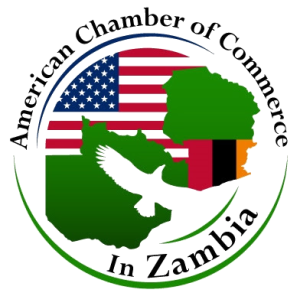
Zambia’s energy landscape is characterized by a diverse mix of resources including hydroelectricity, solar, coal, biomass, and petroleum imports. With petroleum and its derivatives being the only major imported energy sources, Zambia relies significantly on domestic resources to meet its energy needs. Over the past decade, the country’s population has grown at a rate of 3.1 percent per annum, leading to a corresponding increase in energy demand. Additionally, the expansion of mining operations and intensification of manufacturing activity have contributed significantly to this rising energy consumption, particularly electricity, which has been growing at around 3 percent per annum (Zambia Statistics Agency, 2022). Furthermore, a cost-of-service study conducted in 2021 highlighted the demand-side forecast projecting a continuous increase in electricity consumption driven by these factors, underscoring the need for investment in energy infrastructure to meet future demand (Government of the Republic of Zambia, 2022).
Hydropower stands out as Zambia’s primary energy source after wood fuel, contributing approximately 10 percent to the national energy supply. The country possesses significant untapped hydropower potential estimated at around 6,000 MW, with only about 2,898.23 MW currently developed (World Bank Group, 2020). In 2021, hydropower accounted for 82.76 percent of Zambia’s total installed generation capacity, with the remainder divided among coal, heavy fuel oils, diesel, and solar (Zambia Ministry of Energy, 2023). The growth in solar capacity has been facilitated by projects such as the Kitwe-Riverside 34 MW solar plant, highlighting efforts to diversify the energy mix through renewable sources (Industrial Development Corporation Zambia, 2024).
However, despite Zambia’s abundant levels of solar irradiance, solar energy penetration remains relatively low due to high initial investment costs. The market is primarily driven by donor-funded projects and government initiatives aimed at providing solar power to essential services such as schools, clinics, and rural communities. Annual sales in the solar sector range between US$2 million to US$3 million, with substantial portions funded through donor projects. Investment opportunities include local manufacturing of solar components, establishing grid and off-grid solar plants, and supplying solar panels and related accessories (Renewable Energy Agency Zambia, 2023).
To address the growing energy demand and the need to diversify energy sources for climate change mitigation, the Zambian Government has introduced the Renewable Energy Strategy and Action Plan (RESAP). RESAP outlines a roadmap with various market interventions aimed at transforming the energy market and accelerating the adoption of renewable energy technologies, thus enhancing the resilience and robustness of Zambia’s energy sector (Renewable Energy Agency Zambia, 2023).
Wind energy in Zambia has yet to realize its full potential, with wind speeds averaging between 0.1 to 3.5 meters per second (m/s), generally suitable for water pumping rather than electricity generation. However, certain regions of the country, such as the Western Province, exhibit wind regimes with speeds of up to 6 m/s, presenting the opportunity for advanced technologies to harness wind energy for both domestic and agricultural purposes (Renewable Energy Agency Zambia, 2023).
Zambia’s geothermal potential remains largely untapped despite having over 80 hot springs, 35 of which are considered highly suitable for energy production based on temperature, flow rate, and accessibility to infrastructure. The country’s sole geothermal plant, established through a mid-1980s initiative with Italy, has the potential for expansion to generate up to 2 MW of electricity. Efforts are underway to revitalize existing geothermal resources with initiatives led by ZESCO to explore further development opportunities in this sector (Zambia Ministry of Energy, 2023).
Small-scale hydroelectric projects in the country’s Northern and North-Western regions hold promise due to favorable topography, geology, and rainfall patterns conducive to localized power generation. These projects cater to local energy needs and contribute to decentralized electricity supply solutions in remote areas, aligning with Zambia’s broader energy diversification goals (Zambia Ministry of Energy, 2023). Additionally, Zambia plays a critical role within the Southern African Power Pool (SAPP), which has an installed capacity of approximately 50,020 MW and collectively consumes approximately 50,000 MW annually across member countries, including Botswana, the Democratic Republic of Congo (DRC), Lesotho, Mozambique, Namibia, South Africa, Swaziland, Zambia, and Zimbabwe. The projected increase in regional electricity consumption presents opportunities for Zambia to export surplus energy, thereby enhancing regional energy security and strengthening economic ties within the SADC region (Renewable Energy Agency Zambia, 2023).
Given the foregoing, Zambia’s renewable energy sector presents robust investment opportunities amidst its diverse energy landscape and growing energy demands. With abundant natural resources in hydropower, solar, wind, and geothermal energy, coupled with supportive government policies and investment incentives, stakeholders are well-positioned to contribute to sustainable development while meeting the country’s energy needs. As Zambia continues to prioritize energy diversification and environmental sustainability, investments in renewable energy infrastructure are pivotal for driving economic growth, enhancing energy security, and fostering regional integration within the Southern African Power Pool.
References
Government of the Republic of Zambia. (2022). Government Green Paper on the Findings and Recommendations of the 2021 Electricity Cost of Service Study.
Industrial Development Corporation (IDC) Zambia. (2024). Scaling Solar Projects Overview.
Renewable Energy Agency Zambia. (2023). REFiT Strategy Document.
World Bank Group. (2020). Zambia Energy Sector Report.
Zambia Electricity Supply Corporation (ZESCO). (2019). Kafue Gorge Lower Project Update.
Zambia Ministry of Energy. (2023). Rural Electricity Programme Report.
Zambia Statistics Agency. (2022). Zambia Economic Indicators.
